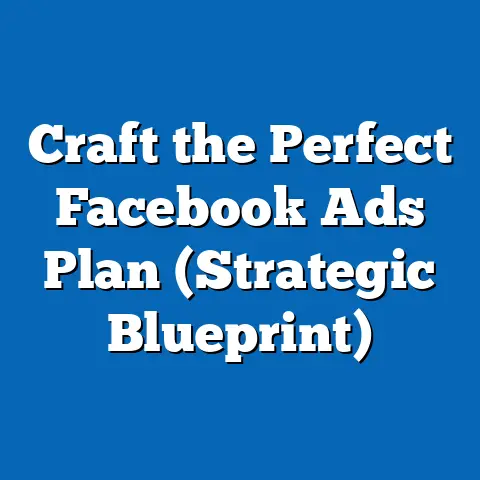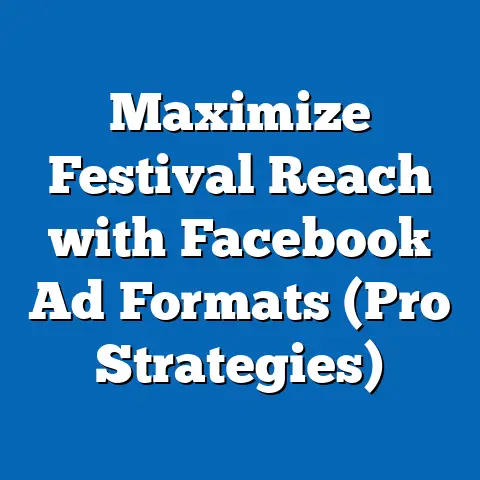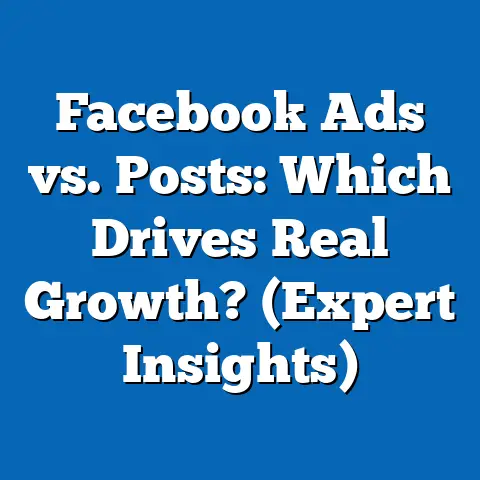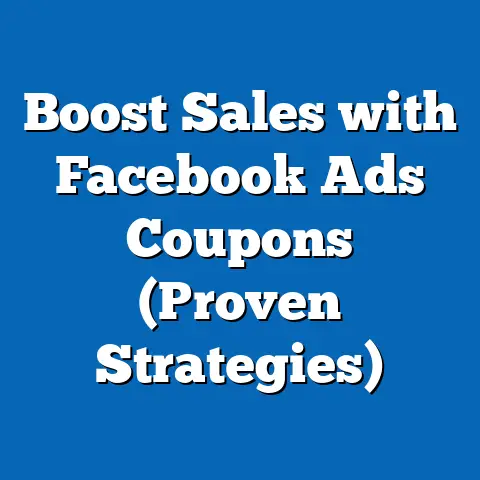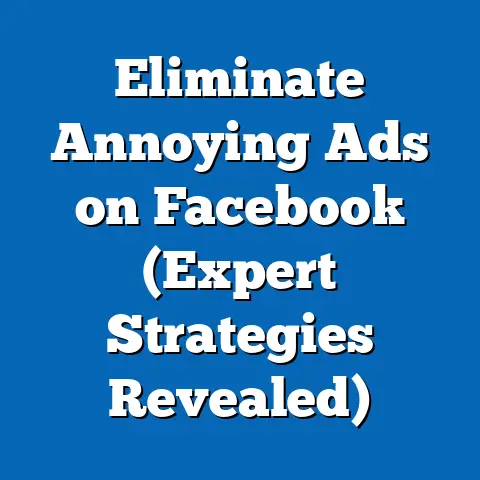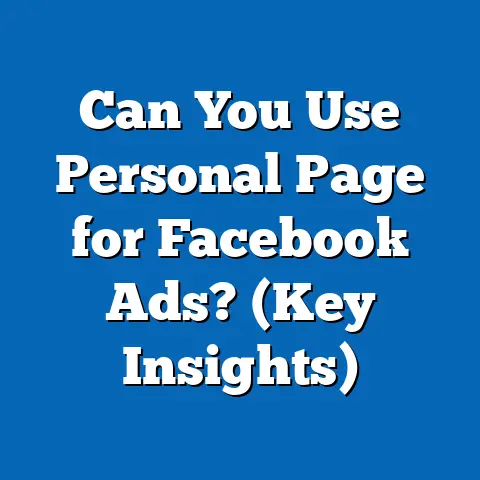Boost Facebook Ads’ Hook Rate (Proven Strategies)
Why did the Facebook ad cross the road? To get to the other side of the newsfeed and finally grab someone’s attention! (Okay, I know, I’m not a comedian, but hopefully, that got a little chuckle!)
Let’s face it, in the wild, wild west of social media, grabbing attention is tougher than ever. We’re all bombarded with content, ads, and notifications every single second. Think of Facebook advertising like fishing. You can have the best rod (budget), the shiniest lure (creative), and the perfect spot (targeting), but if your hook – the initial element that grabs attention – is weak, you’ll come home empty-handed.
I’ve spent years navigating the ever-changing waters of Facebook advertising, and I can tell you firsthand, the hook is everything. I’ve seen campaigns with flawless targeting flop because the initial message just didn’t resonate. On the flip side, I’ve witnessed campaigns with modest budgets explode because their hooks were irresistible.
In this article, I’m going to dive deep into the art and science of creating compelling hooks for your Facebook ads. We’ll explore what a hook rate is, why it’s important, and, most importantly, I’ll share proven strategies you can implement today to boost your hook rate and reel in more customers. So, grab your metaphorical fishing gear, and let’s get started!
Understanding the Hook Rate
What is a Hook Rate in Facebook Ads?
The “hook rate” isn’t an official Facebook metric, but it’s a crucial concept for understanding how effectively your ad grabs attention. I define it as the percentage of people who see your ad and take the first step towards engaging with it. This could be anything from watching a few seconds of a video to reading your headline, clicking on a link, or even just pausing their scroll to take a closer look.
Essentially, the hook rate measures how well your ad stops the scroll. It’s the initial trigger that gets people to pay attention amidst the noise of the newsfeed.
Why is Hook Rate Important?
Think of your ad as a funnel. If the top of the funnel is narrow (low hook rate), you’ll have a hard time getting enough people through the subsequent stages (engagement, clicks, conversions). A high hook rate means your ad is successfully capturing attention, increasing the potential for higher engagement, click-through rates (CTR), and ultimately, conversions.
Here’s why a strong hook rate is so vital:
- First Impressions Matter: You have mere seconds to make an impression. If your ad doesn’t hook viewers instantly, they’ll scroll right past.
- Increased Engagement: A captivating hook leads to more people interacting with your ad, boosting its visibility and reach.
- Improved Ad Relevance: Facebook’s algorithm favors ads that resonate with users. A high hook rate signals to Facebook that your ad is relevant and engaging, leading to better placement and lower costs.
- Higher Conversion Rates: By grabbing attention and piquing interest upfront, you set the stage for a smoother customer journey and higher conversion rates.
- Reduced Ad Fatigue: A fresh, compelling hook can help combat ad fatigue, keeping your message relevant and engaging over time.
The Psychology of Hooking an Audience
What makes us stop scrolling? It’s a complex interplay of psychological factors, but here are a few key drivers:
- Novelty: We’re naturally drawn to things that are new, unexpected, or different. An ad that breaks the mold and offers a fresh perspective is more likely to grab attention.
- Emotional Connection: Ads that evoke emotions – whether it’s joy, sadness, curiosity, or even anger – are more memorable and impactful.
- Relevance: We pay attention to things that are relevant to our interests, needs, and desires. Tailoring your hook to your target audience is crucial.
- Visual Appeal: Humans are visual creatures. Eye-catching imagery and video are powerful tools for grabbing attention.
- Intrigue: Creating a sense of mystery or intrigue can pique curiosity and encourage people to learn more.
I remember once working on a campaign for a local bakery. We initially used generic images of pastries, but the hook rate was abysmal. Then, we decided to create a short video showcasing the baker passionately crafting a signature dessert. The emotional connection, the artistry, and the sheer beauty of the process instantly captivated viewers. The hook rate skyrocketed, and the campaign became a huge success.
Statistics on the Importance of a Strong Hook
- Attention Spans are Shrinking: According to a Microsoft study, the average human attention span has shrunk to just 8 seconds. This means you have even less time to grab attention with your Facebook ads.
- Mobile Dominance: The vast majority of Facebook users access the platform on mobile devices, where scrolling is the default behavior. This makes it even more challenging to stand out in the crowded mobile newsfeed.
- Video is King: Video ads consistently outperform static image ads in terms of engagement and hook rate. According to HubSpot, video generates 1200% more shares than text and images combined.
- Personalization Matters: Personalized ads have a 6x higher transaction rate than generic ads, according to a study by Experian. Tailoring your hook to your target audience is essential for maximizing engagement.
Takeaway: Understanding the hook rate and the psychological factors that drive attention is the first step towards creating more effective Facebook ads. Remember, you only have a few seconds to make an impression, so make them count!
Elements of a Compelling Hook
Now that we understand the importance of the hook rate, let’s break down the key elements that make a hook truly compelling.
Emotional Appeal
Humans are emotional beings, and ads that tap into our feelings are far more likely to resonate. Consider these emotions when crafting your hooks:
- Joy: Evoke happiness, excitement, or humor. Show how your product or service can bring joy to people’s lives.
- Fear: Highlight a problem or pain point that your target audience is experiencing. Emphasize the consequences of inaction.
- Curiosity: Create intrigue and mystery. Tease a solution or reveal a surprising fact.
- Sadness: Use empathy to connect with your audience’s struggles. Show that you understand their challenges and offer a helping hand.
- Anger: Address injustices or frustrations that your target audience is passionate about. Position your brand as an advocate for change.
For example, a campaign for a travel agency might use stunning visuals of exotic destinations to evoke a sense of wanderlust and excitement. A campaign for a cybersecurity company might highlight the risks of data breaches to instill fear and urgency.
I once worked with a non-profit organization that was struggling to raise awareness for their cause. We decided to create a series of video ads featuring personal stories from people who had been impacted by their work. The emotional impact of these stories was immense, and the campaign generated a significant increase in donations.
Curiosity
Curiosity is a powerful motivator. We’re naturally drawn to things that are unknown or mysterious. Here are a few techniques for creating curiosity in your hooks:
- Ask a Question: Pose a thought-provoking question that piques interest and encourages people to learn more.
- Tease a Solution: Hint at a solution to a common problem without revealing all the details.
- Use Intriguing Visuals: Select images or videos that are unusual, unexpected, or visually captivating.
- Create a Cliffhanger: Start a story and leave the ending unresolved. Encourage people to click to find out what happens next.
- Use Numbers and Statistics: Share surprising or counterintuitive data points that grab attention.
For example, an ad for a new productivity app might ask, “Are you wasting 2 hours a day on unproductive tasks?” An ad for a weight loss program might tease, “Discover the one simple trick that helped me lose 30 pounds in 3 months.”
Relevance
Relevance is key to capturing attention and driving engagement. Your hook should be tailored to the specific interests, needs, and desires of your target audience. Here are a few tips for creating relevant hooks:
- Know Your Audience: Conduct thorough research to understand your target audience’s demographics, psychographics, and online behavior.
- Speak Their Language: Use the same language and terminology that your target audience uses.
- Address Their Pain Points: Highlight the problems or challenges that your target audience is facing.
- Offer a Solution: Show how your product or service can help them overcome their challenges and achieve their goals.
- Use Personalization: Leverage Facebook’s targeting options to personalize your hooks based on user demographics, interests, and behaviors.
I remember a campaign I ran for a local gym. We initially used generic hooks that focused on weight loss and fitness. However, we noticed that our target audience was primarily young professionals who were interested in stress relief and social connection. We then changed our hooks to focus on the stress-relieving benefits of exercise and the social atmosphere of the gym. The results were dramatic, with a significant increase in engagement and membership sign-ups.
Clarity
While curiosity and intrigue are important, clarity is equally essential. Your hook should be easy to understand and immediately convey the value proposition of your ad. Here are a few tips for creating clear hooks:
- Use Simple Language: Avoid jargon and technical terms that your target audience may not understand.
- Be Concise: Get straight to the point. Avoid long, rambling sentences.
- Highlight the Benefit: Clearly state the benefit that your product or service offers.
- Use Strong Verbs: Use active verbs that convey a sense of action and urgency.
- Avoid Ambiguity: Make sure your hook is clear and unambiguous. Avoid any potential for misinterpretation.
For example, instead of saying, “Our innovative solution will revolutionize your workflow,” try saying, “Get more done in less time with our productivity app.”
Takeaway: A compelling hook is a blend of emotional appeal, curiosity, relevance, and clarity. By mastering these elements, you can create Facebook ads that grab attention, pique interest, and drive engagement.
Proven Strategies to Enhance Hook Rate
Now that we’ve explored the key elements of a compelling hook, let’s dive into some proven strategies you can use to enhance your hook rate on Facebook.
Strategy 1: Use Eye-Catching Visuals
In the visually-driven world of social media, eye-catching visuals are essential for grabbing attention. Here’s how to leverage visuals effectively:
- High-Quality Images and Videos: Use high-resolution images and videos that are visually appealing and relevant to your message.
- Bright Colors: Use bright, vibrant colors that stand out in the newsfeed.
- Human Faces: Images and videos featuring human faces tend to be more engaging than those without.
- Motion Graphics: Use motion graphics and animations to add visual interest and capture attention.
- Product Demonstrations: Show your product or service in action. Demonstrate its benefits and features.
I’ve found that video ads consistently outperform static image ads in terms of hook rate. Short, attention-grabbing videos are particularly effective. Think quick demos, behind-the-scenes glimpses, or customer testimonials.
For instance, I worked with an e-commerce store selling handmade jewelry. We started by using professional photos of the jewelry on a white background. While the photos were beautiful, the hook rate was mediocre. Then, we created a short video showing the artisan crafting the jewelry by hand. The video was mesmerizing, and the hook rate increased dramatically. It showcased the artistry and passion behind the brand, which resonated deeply with viewers.
Strategy 2: Crafting Powerful Copy
Compelling copy is just as important as eye-catching visuals. Here’s how to craft powerful headlines and ad copy that grab attention:
- Write Strong Headlines: Your headline is the first thing people will see, so make it count. Use strong verbs, numbers, and keywords to grab attention.
- Highlight the Benefit: Clearly state the benefit that your product or service offers.
- Use Storytelling: Tell a story that resonates with your target audience. Share personal anecdotes, customer testimonials, or case studies.
- Create a Sense of Urgency: Use language that creates a sense of urgency or scarcity. Encourage people to take action now.
- Ask a Question: Pose a thought-provoking question that piques interest and encourages people to learn more.
I’m a big believer in the power of storytelling. People are naturally drawn to stories, and ads that tell a compelling story are far more likely to resonate. I once worked with a financial advisor who was struggling to attract new clients. We created a series of ads featuring stories from his clients who had achieved their financial goals with his help. The ads were incredibly effective, and he saw a significant increase in leads and new clients.
Strategy 3: A/B Testing Hooks
A/B testing is a powerful tool for optimizing your Facebook ads and improving your hook rate. Here’s how to use A/B testing effectively:
- Test Different Headlines: Experiment with different headlines to see which ones resonate best with your target audience.
- Test Different Visuals: Try different images and videos to see which ones grab attention most effectively.
- Test Different Ad Copy: Experiment with different ad copy to see which messages resonate best with your target audience.
- Test Different Call-to-Actions: Try different call-to-actions to see which ones drive the most clicks.
- Track Your Results: Use Facebook Ads Manager to track your results and identify the winning variations.
I always recommend testing multiple hooks simultaneously. It’s the best way to discover what truly resonates with your audience. I once worked on a campaign for a software company. We A/B tested two different headlines:
- Headline A: “Increase Your Productivity by 50% with Our Software”
- Headline B: “Stop Wasting Time and Get More Done with Our Software”
Headline B outperformed Headline A by a significant margin. It turned out that our target audience was more motivated by the desire to stop wasting time than by the promise of increased productivity.
Strategy 4: Leveraging User-Generated Content (UGC)
User-generated content (UGC) is a powerful tool for building trust and credibility. Here’s how to leverage UGC in your Facebook ads:
- Customer Testimonials: Feature customer testimonials in your ads. Share their positive experiences with your product or service.
- Product Reviews: Highlight positive product reviews from reputable sources.
- User-Submitted Photos and Videos: Encourage your customers to submit photos and videos of themselves using your product or service.
- Social Media Mentions: Feature positive social media mentions in your ads.
- Case Studies: Share detailed case studies that demonstrate the effectiveness of your product or service.
UGC is incredibly effective because it provides social proof. People are more likely to trust recommendations from other customers than they are from the brand itself.
I worked with a clothing retailer that was struggling to generate sales on Facebook. We decided to launch a campaign featuring photos of real customers wearing their clothes. The results were phenomenal. The ads felt authentic and relatable, and the campaign generated a significant increase in sales.
Strategy 5: Incorporating Social Proof
Social proof is a psychological phenomenon where people are more likely to take action if they see that others are doing the same. Here’s how to incorporate social proof into your Facebook ads:
- Display Customer Reviews: Show positive customer reviews directly in your ad copy.
- Highlight the Number of Customers: Mention the number of customers who have used your product or service.
- Showcase Awards and Recognition: Highlight any awards or recognition your product or service has received.
- Feature Influencer Endorsements: Partner with influencers to endorse your product or service.
- Use “Join the Community” Messaging: Encourage people to join a community of like-minded individuals.
For example, an ad for an online course might say, “Join over 10,000 students who have transformed their careers with our course.” An ad for a restaurant might highlight its positive Yelp reviews.
Takeaway: By implementing these proven strategies, you can significantly enhance your hook rate on Facebook and drive more engagement, clicks, and conversions. Remember to test different approaches and track your results to optimize your campaigns for maximum impact.
Advanced Techniques for Boosting Hook Rate
Ready to take your Facebook ad hooks to the next level? Let’s explore some advanced techniques that can help you stand out from the crowd and capture even more attention.
Utilizing Psychological Triggers
Psychological triggers are powerful tools for influencing human behavior. By incorporating these triggers into your hooks, you can create ads that are more persuasive and compelling. Here are a few key triggers to consider:
- Scarcity: Create a sense of urgency by highlighting limited availability or expiring offers. For example, “Limited time offer! Get 50% off before it’s gone!”
- Urgency: Encourage immediate action by emphasizing the consequences of delay. For example, “Don’t miss out! Sign up now and get a free bonus!”
- Exclusivity: Make people feel special by offering exclusive access or benefits. For example, “VIP access only! Get early access to our new collection.”
- Authority: Leverage the credibility of experts or authority figures to build trust. For example, “Recommended by top dermatologists!”
- Social Proof: As mentioned earlier, show that others are doing the same to encourage conformity.
I once worked with a subscription box company that was struggling to acquire new subscribers. We decided to launch a campaign featuring a limited-edition box with exclusive products. The hook was simple: “Get our limited-edition box before it sells out!” The scarcity and exclusivity of the offer drove a significant increase in subscriptions.
Tailoring Hooks for Different Audiences
One-size-fits-all advertising is a recipe for disaster. To maximize your hook rate, you need to tailor your hooks to the specific interests, needs, and desires of different audience segments.
- Segment Your Audience: Divide your audience into distinct segments based on demographics, psychographics, interests, and behaviors.
- Create Custom Hooks: Develop custom hooks for each segment that address their specific pain points and aspirations.
- Use Dynamic Creative: Leverage Facebook’s dynamic creative feature to automatically tailor your hooks based on user data.
- Test Different Variations: A/B test different hook variations within each segment to optimize for maximum performance.
For example, if you’re selling a product that appeals to both men and women, you might create separate campaigns with different hooks that resonate with each gender. An ad targeting men might focus on the product’s functionality and performance, while an ad targeting women might focus on its aesthetic appeal and style.
I remember working on a campaign for a language learning app. We initially used generic hooks that focused on the general benefits of learning a new language. However, we noticed that different audience segments were motivated by different factors. For example, students were primarily interested in improving their grades, while professionals were more interested in advancing their careers. We then created custom hooks for each segment that addressed their specific motivations. The results were dramatic, with a significant increase in engagement and app downloads.
Staying Ahead of Trends
The social media landscape is constantly evolving. To keep your hooks fresh and relevant, you need to stay ahead of trends and adapt your messaging accordingly.
- Monitor Social Media: Keep an eye on trending topics and hashtags on social media.
- Follow Industry News: Stay up-to-date on the latest news and developments in your industry.
- Leverage Pop Culture: Incorporate references to popular movies, TV shows, and music into your hooks.
- Participate in Challenges: Join in on viral challenges and trends to increase your visibility.
- Be Authentic: Don’t try to force trends that don’t align with your brand. Stay true to your values and voice.
I’ve seen brands successfully leverage trends to create incredibly engaging Facebook ads. For example, during the release of a highly anticipated movie, a fast-food chain created an ad featuring a character from the movie enjoying their fries. The ad went viral and generated a huge amount of buzz.
Takeaway: By utilizing psychological triggers, tailoring hooks for different audiences, and staying ahead of trends, you can create Facebook ads that are more persuasive, relevant, and engaging.
Measuring and Analyzing Hook Rate Performance
Creating compelling hooks is only half the battle. You also need to measure and analyze their performance to ensure they’re driving the desired results.
Key Metrics to Track
Here are some key metrics to track when evaluating your hook performance:
- Impressions: The number of times your ad was shown.
- Reach: The number of unique people who saw your ad.
- Click-Through Rate (CTR): The percentage of people who clicked on your ad after seeing it.
- Video Views: The number of people who watched your video ad.
- Engagement Rate: The percentage of people who interacted with your ad (likes, comments, shares).
- Cost Per Click (CPC): The average cost you paid for each click on your ad.
- Conversion Rate: The percentage of people who completed a desired action after clicking on your ad (e.g., making a purchase, signing up for a newsletter).
While Facebook doesn’t explicitly provide a “hook rate” metric, you can infer it by analyzing the relationship between impressions, reach, and engagement. A high engagement rate relative to impressions and reach suggests that your hook is effectively capturing attention.
Using Facebook Insights and Analytics
Facebook provides a wealth of data and analytics that can help you assess your ad performance. Here’s how to use Facebook Insights and Analytics to evaluate your hook effectiveness:
- Facebook Ads Manager: Use Facebook Ads Manager to track your key metrics and analyze your ad performance.
- Facebook Pixel: Install the Facebook Pixel on your website to track conversions and measure the ROI of your ads.
- Google Analytics: Integrate Google Analytics with your Facebook ads to get a more comprehensive view of your website traffic and user behavior.
- A/B Testing Tools: Use A/B testing tools to compare different hook variations and identify the winning ones.
Interpreting Data and Making Adjustments
Once you’ve collected your data, it’s time to interpret the results and make informed adjustments to your hooks. Here’s a step-by-step guide:
- Identify Trends: Look for patterns and trends in your data. Which hooks are performing well? Which hooks are underperforming?
- Analyze the Data: Dig deeper into the data to understand why certain hooks are working better than others. Consider factors such as audience demographics, ad placement, and creative elements.
- Make Adjustments: Based on your analysis, make adjustments to your hooks. Experiment with different headlines, visuals, and ad copy.
- Track Your Results: Continue to track your results and monitor your performance. Iterate and refine your hooks based on the data.
I always emphasize the importance of continuous optimization. Facebook advertising is an iterative process. You need to constantly test, measure, and refine your hooks to maximize their effectiveness.
Takeaway: Measuring and analyzing your hook performance is essential for optimizing your Facebook ads and achieving your marketing goals. By tracking key metrics, using Facebook Insights and Analytics, and interpreting your data, you can make informed adjustments to your hooks and drive better results.
Conclusion
So, we’ve reached the end of our fishing expedition into the world of Facebook ad hooks! Remember that joke I started with? The one about the Facebook ad that couldn’t get any attention? Well, the moral of the story is: Don’t let your ads be that ad!
A strong hook is the foundation of any successful Facebook advertising campaign. By mastering the elements of a compelling hook, implementing proven strategies, and continuously measuring and analyzing your performance, you can create ads that grab attention, pique interest, and drive engagement.
In this article, we’ve covered a lot of ground. We’ve explored:
- The importance of the hook rate in Facebook ads.
- The key elements of a compelling hook: emotional appeal, curiosity, relevance, and clarity.
- Proven strategies for enhancing your hook rate: using eye-catching visuals, crafting powerful copy, A/B testing hooks, leveraging user-generated content, and incorporating social proof.
- Advanced techniques for boosting your hook rate: utilizing psychological triggers, tailoring hooks for different audiences, and staying ahead of trends.
- How to measure and analyze your hook performance using Facebook Insights and Analytics.
Now, it’s time to put these strategies into action. Experiment with different approaches, track your results, and continuously refine your hooks to maximize their effectiveness.
And remember, just like fishing, Facebook advertising requires patience, persistence, and a little bit of luck. But with the right hooks, you’ll be reeling in customers in no time! Now go out there and create some irresistible hooks that will make your Facebook ads stand out from the crowd. Happy advertising!

